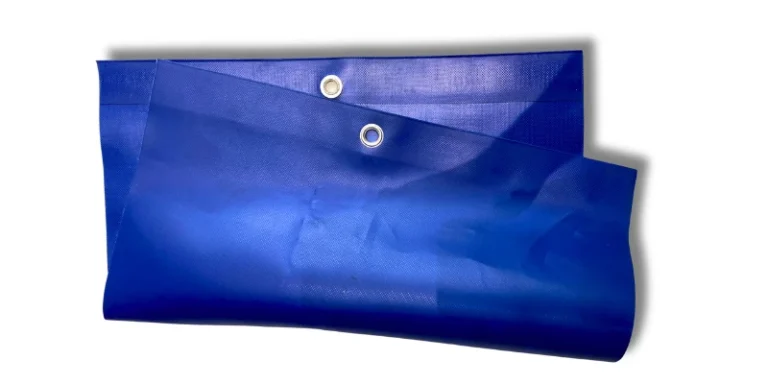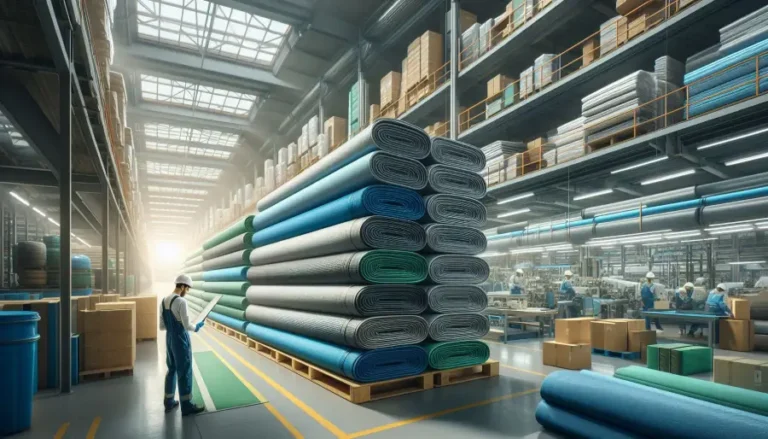The Ultimate Guide to Choosing the Best Tarpaulin Material for Your Needs
Introduction
Choosing the right tarpaulin material can feel overwhelming with the variety of options available. Whether you're using a tarp for camping, construction, or protecting outdoor furniture, selecting the correct material is essential for ensuring durability and functionality. In this comprehensive guide, we'll walk you through everything you need to know about tarpaulin materials, so you can make a well-informed decision tailored to your needs.
What is a Tarpaulin?
A tarpaulin, or tarp, is a large, durable sheet made from materials like polyethylene, polyvinyl chloride (PVC), canvas, or mesh. These materials are typically waterproof or water-resistant, designed to provide protection against elements such as moisture, dust, and UV rays.
Common Tarpaulin Uses
Tarpaulins are highly versatile and are used across a range of applications, including:
- Covering vehicles and boats
- Providing temporary shelter for camping
- Protecting construction sites
- Covering outdoor furniture
- Ground covers for events or outdoor workspaces
Types of Tarpaulin Materials
Polyethylene (PE) Tarpaulin
Polyethylene (PE) Tarpaulin is made from woven polyethylene fabric, which makes it lightweight, flexible, waterproof, and UV-resistant. Its affordability and ease of handling are major advantages, along with its excellent water resistance. However, it is less durable and prone to tearing under stress. This type of tarpaulin is best suited for temporary shelters, covering garden furniture, and protecting vehicles or boats.

Pros:
- Affordable and easy to handle
- Great water resistance
Cons:
- Less durable, prone to tearing under stress
Best For: Industrial covers, construction sites, long-term outdoor use.
Polyvinyl Chloride (PVC) Tarpaulin
Polyvinyl Chloride (PVC) Tarpaulin is crafted from laminated or coated PVC fabric, making it heavy-duty, highly durable, and waterproof. Its strength and resistance to harsh weather conditions make it versatile for various applications, though it tends to be more expensive, heavier, and less flexible. It is ideal for industrial covers, construction sites, and long-term outdoor use.

Pros:
- Extremely durable and weather-resistant
- Versatile for various applications
Cons:
- More expensive, heavier, and less flexible
Best For: Industrial covers, construction sites, long-term outdoor use.
Canvas Tarpaulin
Canvas Tarpaulin is made from natural or synthetic fibers, offering breathability and durability, often treated to resist water and mildew. Environmentally friendly and breathable, canvas tarps are perfect for outdoor events, camping, and covering machinery. However, they can be heavy and require regular maintenance to maintain their water resistance.

Pros:
- Environmentally friendly
- Highly breathable
Cons:
- Can be heavy and may require regular maintenance to maintain water resistance
Best For: Outdoor events, camping, covering machinery.
Mesh Tarpaulin
Mesh Tarpaulin is created from loosely woven fabric, allowing air and light to pass through while being UV-resistant. It is lightweight and ideal for windy areas, offering shade without obstructing airflow. However, it is not waterproof and provides less privacy. Mesh tarps are best used for shade structures, windbreaks, and pool covers.

Pros:
- Ideal for windy areas
- Lightweight, provides shade without obstructing airflow
Cons:
- Not waterproof, offers less privacy
Best For: Shade structures, windbreaks, pool covers.
Factors to Consider When Choosing a Tarpaulin Material
1. Durability
The material’s durability depends on its intended use. For heavy-duty applications, such as industrial projects, opt for PVC tarpaulins. For lighter, short-term use, PE tarps provide an affordable option.
2. Weather Resistance
If you’re facing unpredictable weather conditions, a PVC or PE tarp will offer excellent water resistance. Canvas tarps provide breathability, making them ideal for moderate climates.
3. Flexibility
PE tarps are easy to maneuver and store due to their lightweight construction. PVC tarps, though heavier, offer superior durability but may be less flexible.
4. Cost
Your budget will dictate your choice. PE tarps are budget-friendly for temporary use, while PVC and canvas tarps come at a higher cost but provide superior longevity.
5. Application
Select your tarp based on its intended use. PE tarps are perfect for outdoor camping or covering light objects, whereas PVC tarps are suited for long-term industrial and outdoor projects.
Best For: Shade structures, windbreaks, pool covers.
Comparing Tarpaulin Materials
PE vs. PVC: PE tarps are lightweight and affordable, ideal for short-term use. PVC tarps, however, provide maximum durability and are designed for heavy-duty, long-term applications.
PVC vs. Canvas: PVC is fully waterproof and highly durable, ideal for industrial use. Canvas offers breathability and is better for applications requiring airflow, such as covering machinery.
Canvas vs. Mesh: Canvas provides solid coverage, while mesh allows airflow and light penetration, making it ideal for areas needing shade or windbreaks.
How to Choose the Right Size and Thickness
Standard Sizes
Tarpaulins come in various standard sizes, from small covers to large industrial sheets. Choose a size that offers full coverage with extra room for securing the tarp properly.
Thickness Ratings
Tarps are typically measured in mils (thousandths of an inch) or grams per square meter (GSM). The higher the number, the thicker and more durable the tarp. Consider your usage when selecting thickness; thicker tarps provide better protection but may be heavier.
Special Features to Consider
UV Protection
UV protection is crucial for tarps that will be exposed to direct sunlight, ensuring the material doesn’t degrade quickly.
Fire Retardancy
If you’re using tarps in high-risk environments like construction sites or events, fire-retardant tarps are a must. They help prevent ignition and slow flame spread.
Waterproofing
While many tarps are water-resistant, additional waterproofing treatments can enhance protection, especially in extreme weather conditions.
Reinforced Edges
Look for tarps with reinforced edges and grommets to ensure extra strength, making them easier to secure and less likely to tear under tension.
Eco-Friendly and Sustainable Tarpaulin Options
For those conscious of environmental impact, consider canvas tarps or tarps made from recycled materials. These options are biodegradable or made with less environmentally harmful processes.
Maintenance Tips for Different Tarpaulin Materials
Polyethylene (PE) Tarpaulins
- Regularly check for tears and promptly repair them.
- Clean using mild soap and water to prevent dirt buildup and mildew.
Polyvinyl Chloride (PVC) Tarpaulins
- Inspect regularly for signs of wear.
- Clean with mild detergent and dry completely before storage to avoid mold.
Canvas Tarpaulins
- Clean with a soft brush and mild soap, and re-treat with a water-resistant solution as needed.
- Store in a dry place to prevent mildew.
Mesh Tarpaulins
- Clean by hosing down with water, and inspect for damage regularly.
- Repair minor tears promptly to extend the tarp’s lifespan.
FAQ
Find quick answers to common questions.


